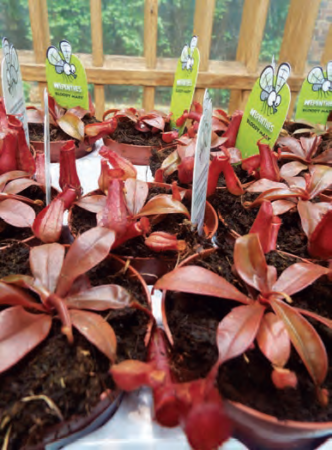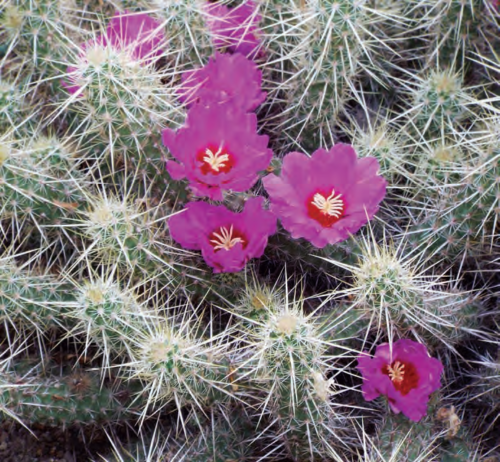Noeleen Smyth explains how Brexit will impact the import and export of rare plants between the UK and Ireland
The UK Government’s formal rejection in June, of a Brexit transition period extension, means that movement of CITES-listed plant and animal species between our two countries will need import/export permits following the UK’s exit from the EU on December 31, 2020.
The movement of listed plant and animal species has not been an issue up until now, as the UK were part of the EU; however, from January 1, 2021, the rules will change. This will impact your business significantly if you regularly source CITES-listed plants and bulb species such as snowdrops and orchids from UK nurseries. The UK nursery will need to get CITES export permits from the UK CITES Management Authority and you as an importer may have to get import permits from the Irish CITES Management Authority. As the UK CITES charge for export permits this may add to the cost of your import if the charge is passed on to the importer. The Irish CITES Management Authority does not charge for permits.
“ This will impact your business significantly if you regularly source CITES-listed plants and bulb species such as snowdrops and orchids from UK nurseries.“
For a quick way to find out if the plant you are dealing in and wish to import (or export) is CITES listed, or if you want to know what species are listed, you should access https://speciesplus.net/. Species+ is updated after each CITES and EU CITES trade meeting, and is managed by the United National Environment Programme at the World Conservation Monitoring Centre. Species+ incorporates the latest EU CITES regulations to take account of the changes and decisions made at each CITES Conference. If you have any queries on imports or exports of listed species they can be directed to the CITES Management Authority based in Smithfield, Dublin. (https://www.npws.ie/licences/importexport-trade/cites).

CITES BACKGROUND
Ireland and the EU continue to import and export large quantities of wild-sourced plant species; part of international trade in wildlife and wildlife products currently estimated to be worth billions of euros. Wild plants and animals are imported as live for the pet and horticultural industries, or as parts for use in cosmetics, perfumes, food supplements, musical instrument, timber and medicines. Garden centres are now lifestyle centres selling furniture and even what were traditional hardware stores now sell plants and pets too. Horticulture has expanded into new horizons and new industries have branched, literally, into horticulture.
CITES (The Convention on International Trade in Endangered Species of wild fauna and flora), came into force on July 1, 1975. Today, over 183 countries (or parties) have agreed to enforce and uphold the Convention which regulates trade in rare and endangered species of wild plants and animals. Plant species make up the majority of CITES-listed species. Today, over 30,000 plant and 6,000 animal species and subspecies are listed on the three different CITES lists or appendices. This means you may need a CITES permit to import and export any of the species listed.
For a species to be listed on CITES it has to meet two criteria, firstly they must be rare in the wild and secondly they must occur in international trade. So why would we trade in such rare species you might ask? Well, the answer is well-managed trade can help with both species conservation and sustainable livelihoods. Our most charismatic, most sought after and useful animal and plant species are found in our most biodiversity-rich, but poorer developing parts of our world.


There are 60 plant families with species listed on the CITES’ Appendices, ranging from well-known families such as orchids, cacti, and cycads to more unusual ones such as Didiereaceae, which is an unusual family of spiny succulents from Madagascar and Africa. One of the largest plant families, the orchid family, dominates the CITES listings, accounting for 84% of listed species. Orchids for sale as cut flowers and pot plants represent a trade worth millions of euro and over 39 species of orchids in European trade appear in the components of cosmetic, food and medicinal products.
The most recent EU Wildlife Trade report in 2016 highlighted that of the 3,200 imported CITES taxa into the EU, 2,400 of them were plants. It is estimated that 73% of all global CITES trade with the EU is in plants species. Snowdrops, cacti, cycads and orchids continue to dominate the trade by number, with Aloe extracts, tropical timber and bark also featuring highly by volume.
Live ornamental plants are the commodity imported in the highest quantities, consisting of wild-sourced snowdrops (Galanthus spp.) and cacti, cycads and orchids. Other notable imports of plants included stems from sago palm (Cycas revoluta), leaves from Rhipsalis, bark from African cherry (Prunus africana) and wax from candelilla (Euphorbia antisyphilitica).
THE APPENDICES


The CITES Appendices are labelled I, II and III. Appendix I species are those directly threatened with extinction and the international movement of these species is only permitted for conservation purposes e.g. slipper orchids. Appendix II species are those which are not immediately threatened with extinction, but for which international trade in them has to be regulated to ensure their sustainability in the wild; e.g. most orchid species, cacti, pitcher plants, rosewood timbers, etc. The majority of trade in CITES-listed species in Europe are for species listed in Appendix II. The bulk of which is from a small number of species such as snowdrops and wild cherry.
To have a species included in Appendix I or II, a two-thirds majority of the 183 parties or countries signed up to the Convention is required. This can only happen at a CITES Conference of the Parties (CoP) meeting which happens every few years. The last Conference of the parties meeting, CoP 18, was held in Geneva, Switzerland in August 2018. The next is due in Costa Rica in 2022.
Appendix III species are species where countries seek international co-operation to monitor international trade in one of their native species. A country can notify parties of their decision and an Appendix III listing can be initiated by a party to the Convention at any time; e.g. Pine (Pinus koriansus) from the Russian Federation. The party doesn’t need to wait until the next CoP. ✽
CITES IRELANDIreland ratified and formally became a party to CITES in 2002 and has nationally designated bodies to monitor any trade-in CITES-listed species. The Management Authority is based at the National Parks and Wildlife Service and is part of the Department of Culture, Heritage and the Gaeltacht. This authority has responsibility for the issuance of permits and certificates to facilitate and monitor trade in CITES-listed goods. The CITES Scientific Authority has a responsibility to advise on scientific matters in relation to any listed species and to make non-detriment findings (NDF) when a new species enters a trade. CITES enforcement is done through the officers of the Revenue and Customs service as well as through the Conservation Rangers and Regional Management of the National Parks and Wildlife Service. |
  |








